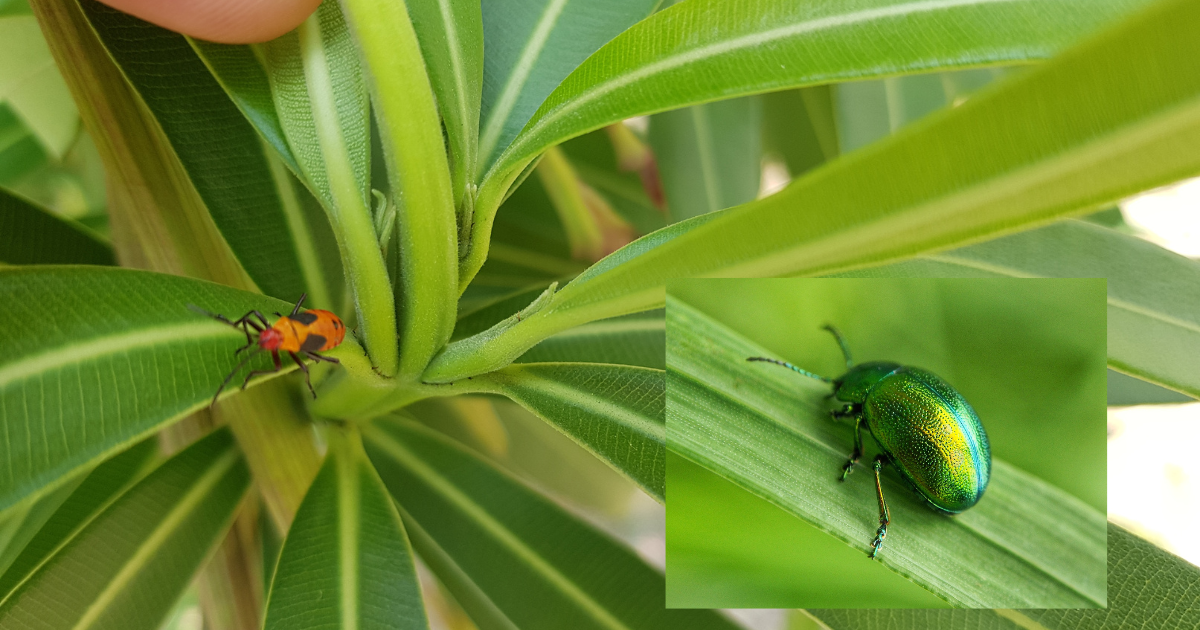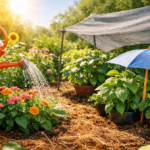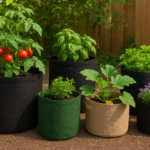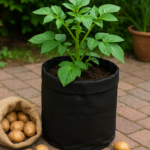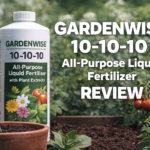Houseplants, with their lush foliage and vibrant colors, have long been cherished as companions that breathe life into our living spaces. As we invite these green allies into our homes, a common concern lingers: do houseplants attract bugs? In this exploration, we unravel the intricacies of this age-old question, aiming to dispel myths and provide practical insights for plant enthusiasts.
While the benefits of houseplants are well-established – from improving air quality to enhancing mental well-being – the potential attraction of bugs can cast a shadow over the joy of indoor gardening. Join us on a journey where we navigate the delicate balance between fostering a thriving indoor garden and mitigating the risks of unwelcome insect guests. Whether you’re a seasoned plant parent or a novice green thumb, this article promises valuable information on bug prevention, natural repellents, and creating a bug-resistant haven for your beloved houseplants. Embrace the beauty of indoor gardening without the fear of unwanted visitors.
Common concerns about bugs and houseplants

The harmonious relationship between houseplants and bugs often raises common concerns among plant enthusiasts. One prevalent worry revolves around the fear of bugs wreaking havoc on the carefully nurtured indoor garden. The anxiety of potential infestations can deter individuals from enjoying the numerous benefits of houseplants. Concerns about damage to plant health, the spread of pests to other areas of the home, and the perceived difficulty of dealing with bug problems contribute to a sense of apprehension.
Additionally, the misconception that all houseplants inevitably attract bugs further fuels these concerns. Addressing these apprehensions requires a nuanced understanding of the factors contributing to bug attraction, dispelling myths, and offering practical solutions for bug prevention. By addressing these everyday worries, plant lovers can confidently cultivate their indoor oasis, appreciating the beauty of houseplants without the looming fear of unwanted insect guests.
Benefits of Houseplants
Air Purification:
- Houseplants act as natural air purifiers, absorbing pollutants and toxins like formaldehyde, benzene, and carbon monoxide, contributing to better indoor air quality.
Oxygen Production:
- Through photosynthesis, plants release oxygen into the air, improving oxygen levels and promoting a healthier atmosphere in indoor spaces.
Stress Reduction:
- Caring for houseplants has been linked to reduced stress levels. Nurturing and connecting with nature provides a calming effect, contributing to overall mental well-being.
Improved Concentration and Productivity:
- Studies suggest that plants in work or study areas can enhance concentration, creativity, and cognitive function, leading to increased productivity.
Aesthetic Appeal:
- Houseplants add beauty and visual interest to indoor spaces. Their diverse shapes, sizes, and colors allow for personalized décor, creating a more pleasant and inviting environment.
Connection with Nature:
- Bringing nature indoors creates a sense of connection with the outdoors. Houseplants offer a touch of nature, even in urban environments, promoting a sense of tranquility and well-being.
Humidity Regulation:
- Plants release moisture through transpiration, contributing to natural humidity regulation in indoor spaces and preventing the air from becoming too dry.
Noise Reduction:
- Some houseplants can absorb and diffract sound waves, acting as natural noise barriers and contributing to a quieter and more peaceful living or working environment.
Customizable Decor:
- With a wide variety of plant species available, individuals can choose houseplants that match their preferences and complement their interior design, allowing for personalization in home décor.
Educational Opportunities:
- Caring for houseplants provides an opportunity to learn about different plant species, their growth patterns, and specific care requirements, fostering a sense of responsibility and knowledge about nature.
Common Bugs Attracted to Houseplants
Houseplants can be a haven for various bugs, creating an unintended ecosystem within your home. Fungus gnats are a common annoyance, thriving in moist soil and laying eggs that hatch into larvae, potentially harming plant roots. Spider mites, minuscule arachnids, can infest houseplants, causing leaves to discolor and develop a stippled appearance. Scale insects, resembling tiny, immobile bumps, can latch onto stems and leaves, sucking out plant juices. With their white, cotton-like appearance, Mealybugs feed on plant sap, leading to stunted growth and yellowing leaves.
Aphids, tiny insects in various colors, target new growth on houseplants, draining them of vital nutrients. Thrips, slender insects with fringed wings, can leave silver streaks on leaves and transmit viruses between plants. Whiteflies, resembling tiny moths, congregate on the undersides of leaves, extracting plant juices and leaving behind a sticky residue called honeydew.
Preventing these infestations involves maintaining proper watering practices, regularly inspecting plants for signs of pests, and providing adequate ventilation. Natural remedies like neem oil or insecticidal soaps can also help control these bugs without harming the plants. Regular monitoring and prompt action can keep your houseplants thriving and bug-free.
Natural Pest Repellents
- Neem Oil: Derived from the neem tree, neem oil is an effective natural pest repellent. It disrupts the life cycle of insects, making it a potent solution for various pests.
- Peppermint Oil: The strong scent of peppermint oil is known to deter pests such as spiders, ants, and mosquitoes. It can be used as a spray around entry points.
- Diatomaceous Earth: This natural powder, composed of fossilized diatoms, is harmless to humans and pets but deadly to insects with exoskeletons. Sprinkle it in areas where pests are a problem.
- Citrus Peels: Citrus peels, especially from oranges and lemons, contain natural oils that repel insects. Place peels near entry points or infested areas to discourage pests.
- Garlic Spray: A garlic-infused spray can help repel insects due to its strong odor. Mix crushed garlic with water and spray it on plants or areas with pests.
- Cedarwood: Cedarwood has natural insect-repelling properties. Use cedarwood chips or essential oil in closets, drawers, or areas prone to moth infestations.
- Marigolds: Planting marigolds in and around your garden can help deter nematodes and other pests, thanks to the natural compounds they produce.
- Chrysanthemum Flowers (Pyrethrum): The flowers contain pyrethrin, a natural insect repellent. It’s often used in sprays and powders for controlling various pests.
Proper Plant Care
- Proper plant care is essential for maintaining the health and vitality of your green companions. Firstly, ensure that your plants receive the right amount of light. Different plants have varying light requirements, so place them in locations that match their needs, whether bright, indirect light, or partial shade.
- Watering is a crucial aspect of plant care. Overwatering can lead to root rot, while underwatering can cause wilting and stress. Understand the specific watering needs of each plant and establish a consistent watering schedule. Use well-draining soil to prevent waterlogged conditions.
- Regular pruning promotes healthy growth by removing dead or damaged parts. Trim long stems and spent flowers to encourage new blossoms and maintain a compact shape. Fertilize plants during the growing season with a balanced fertilizer to provide essential nutrients.
- Monitor for pests regularly. Early detection allows prompt intervention, preventing infestations that can harm your plants. Wipe down leaves, inspect for pests, and treat affected areas with natural solutions or insecticidal soap.
- Lastly, be mindful of the environment. Maintain a clean space around your plants and avoid sudden temperature fluctuations. Rotate indoor plants periodically to ensure even growth.
- By adhering to these practices, you create an optimal environment for your plants, fostering their well-being and enhancing the enjoyment of your indoor or outdoor greenery.
Types of Houseplants Less Attractive to Bugs
- Succulents: Many bugs are deterred by the waxy and succulent leaves of succulents, which are less prone to infestations.
- Ferns: With feathery and delicate foliage, ferns are less attractive to pests and can thrive in low-light conditions.
- Spider Plant (Chlorophytum comosum): Known for its air-purifying qualities, it is resistant to many common pests.
- Snake Plant (Sansevieria): Robust and resilient, snake plants are less susceptible to bug issues due to their tough leaves and low maintenance requirements.
- ZZ Plant (Zamioculcas zamiifolia): ZZ plants have thick, glossy leaves that insects find less appealing, making them a pest-resistant choice for indoor spaces.
Signs of Pest Infestation
Recognizing signs of a pest infestation is crucial for prompt intervention and protecting your plants. Here are common indicators that your plants may be facing a pest problem:
- Visible Damage:
- Observe the leaves, stems, and overall appearance of your plants. Irregular holes, chewed edges, or discolored spots may signify insect feeding.
- Sticky Residue:
- A sticky substance, known as honeydew, on leaves or nearby surfaces can indicate an infestation of sap-sucking pests like aphids or scale insects.
- Wilting or Yellowing Leaves:
- Unexplained wilting, yellowing, or stunted growth can be signs of various pests, including root-feeding insects or those that transmit diseases.
- Webbing:
- Spider mites and certain caterpillars produce silk-like webbing. It could indicate these pests if you notice fine webbing on your plants.
- Undersized Holes in Soil:
- Fungus gnat larvae feed on plant roots, often leaving small holes in the soil’s surface. Seeing tiny holes or noticing adult fungus gnats flying around might be a sign of their presence.
- Visible Pests:
- Directly spotting pests on your plants is a clear sign of an infestation. Inspect the leaves, stems, and undersides for insects like aphids, spider mites, or mealybugs.
- Distorted Growth:
- Deformed or twisted plant growth can result from the feeding activities of certain pests. Aphids, for example, can cause distorted leaves and shoots.
- Leaf Curling:
- Aphids, spider mites, and whiteflies can cause leaves to curl. Check for the presence of these pests on the undersides of leaves.
Regularly inspecting your plants and being vigilant for these signs will enable you to detect pest issues early, facilitating effective and timely intervention to protect the health of your greenery.
Dealing with Specific Bugs

Dealing with specific bugs requires targeted approaches. Here are some common pests and how to address them:
Fungus Gnats:
- Signs: Small, dark flies hovering around the soil and tiny larvae in the soil.
- Treatment: Allow the soil to dry between waterings, use well-draining soil, and consider placing sticky traps near plants.
Aphids:
- Signs: Clusters of tiny, soft-bodied insects on new growth, often green or black.
- Treatment: Spray affected plants with water and a few drops of dish soap, introduce natural predators like ladybugs, or use neem oil.
Spider Mites:
- Signs: Fine webbing on plants, stippled or discolored leaves.
- Treatment: Increase humidity, regularly wash plants, and apply insecticidal soap or neem oil.
Scale Insects:
- Signs: Small, hard, or waxy bumps on stems and leaves.
- Treatment: Remove scales manually, use a soft brush to clean affected areas, and apply neem oil.
Mealybugs:
- Signs: White, cottony masses on stems and leaf joints.
- Treatment: Wipe affected areas with a cotton swab dipped in rubbing alcohol, use insecticidal soap, or introduce natural predators.
Whiteflies:
- Signs: Small, white, moth-like insects on the undersides of leaves.
- Treatment: Use yellow sticky traps, spray with neem oil or insecticidal soap, and encourage natural predators like ladybugs.
Thrips:
- Signs: Silver streaks or small scars on leaves, tiny insects with fringed wings.
- Treatment: Remove affected leaves, introduce beneficial insects like predatory mites, and use neem oil.
Regularly inspecting plants, maintaining good hygiene, and using natural remedies can help control specific pests and keep your plants healthy. If an infestation persists, consider seeking advice from local plant experts or using targeted commercial insecticides.
Expert Tips and Advice

Know Your Plants:
- Understand the specific needs of each plant, including light, water, and soil requirements. Tailoring care to individual species enhances overall plant health.
Consistent Watering:
- Establish a regular watering schedule based on plant needs. Avoid overwatering or allowing soil to dry out completely, promoting optimal hydration.
Inspect Regularly:
- Routinely check plants for signs of pests, diseases, or stress. Early detection allows for prompt intervention, preventing issues from escalating.
Proper Drainage:
- Ensure pots have adequate drainage to prevent waterlogged soil, minimizing the risk of root rot and fungal problems.
Pruning and Deadheading:
- Regularly trim dead or yellowing leaves and spent flowers. Pruning promotes air circulation and redirects energy for healthier growth.
Natural Pest Control:
- Integrate insect-repelling plants like lavender or basil. Use natural remedies such as neem oil or insecticidal soap to address pest issues.
Rotate Indoor Plants:
- Rotate potted plants periodically to ensure even exposure to light and prevent one-sided growth.
Choose Appropriate Containers:
- Select pots with drainage holes and suitable sizes for plant growth. Avoid overcrowding to prevent competition for resources.
Learn from Experience:
- Observe how your plants respond to various conditions and adjust care accordingly. Experience and observation are valuable tools for successful gardening.
Seek Expert Advice:
- Consult with local garden centers, horticulturists, or online gardening communities for tailored advice and solutions to specific plant care challenges.
By incorporating these expert tips, gardeners can foster a thriving and resilient garden, promoting the well-being of their plants and enhancing the overall gardening experience.
Read to know more: “Why is my Pothos not growing?
Conclusion
In conclusion, proactive and attentive plant care is crucial for preventing and addressing pest infestations. Regular monitoring for signs of pests, maintaining proper watering practices, and employing natural remedies contribute to a thriving indoor or outdoor garden. Identifying and treating specific bugs promptly, along with incorporating insect-repelling plants, enhances your green companions’ overall health and longevity. With a combination of vigilance and targeted solutions, gardeners can create an environment that fosters plant well-being while minimizing the impact of pests, allowing for the enjoyment of flourishing and pest-free green spaces.
FAQs
Are all houseplants prone to attracting bugs?
No, some houseplants are less attractive to bugs, and proper care can further reduce the risk.
What are natural pest repellents for houseplants?
Natural repellents include neem oil, soapy water, and introducing beneficial insects.
How do I recognize signs of a bug infestation in my houseplants?
Look for yellowing leaves, unusual spots, or webs as early indicators of a pest problem.
Can I use chemical pesticides on indoor plants?
While it’s possible, it’s advisable to opt for non-toxic solutions to protect both your plants and the environment.
Are there houseplants that are virtually bug-proof?
Yes, plants like snake plants and succulents are known to be less prone to pest infestations.

